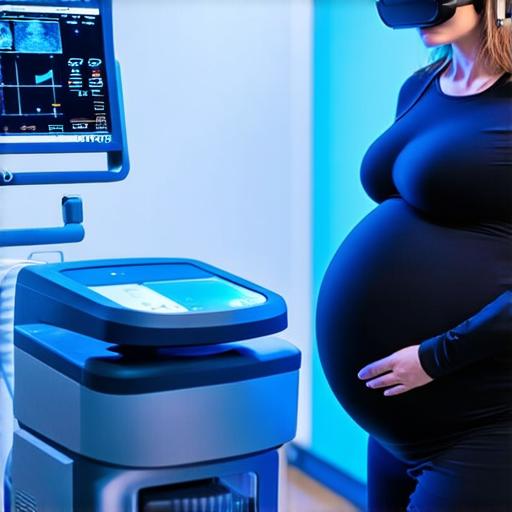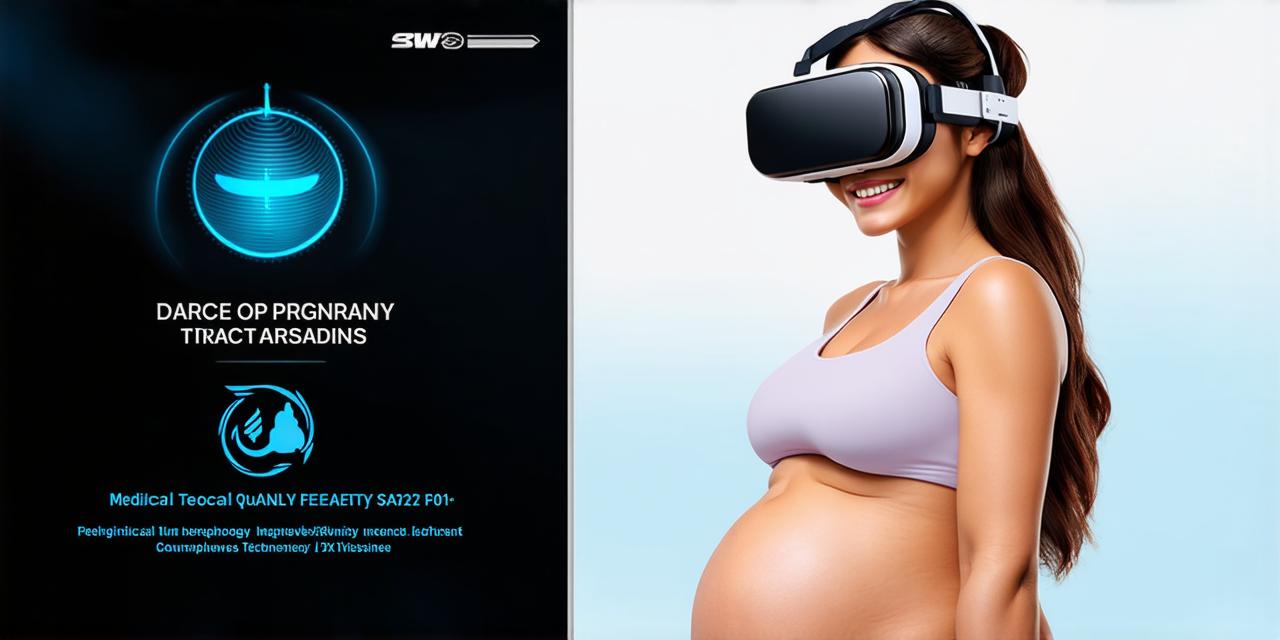Virtual reality (VR) technology is rapidly gaining popularity in various industries, including gaming, education, and healthcare. However, as with any new technology, there are concerns about the safety of VR for pregnant women.
In this article, we will explore the latest research on the subject and provide developers with practical tips for ensuring that their VR experiences are safe and enjoyable for pregnant women.
The Science Behind Virtual Reality and Pregnancy
Virtual reality involves the use of a head-mounted display (HMD) to simulate a 3D environment. While there is limited research on the effects of VR on pregnancy, some studies have suggested that it may be beneficial for reducing stress and anxiety during pregnancy.
However, it is important for developers to be aware of potential risks associated with VR technology during pregnancy. One concern is motion sickness, which can cause nausea and vomiting. Pregnant women are particularly susceptible to motion sickness due to the hormonal changes that occur during pregnancy.
There are also concerns about the effects of prolonged exposure to bright screens on the developing fetus, as well as potential risks associated with VR headsets, such as eye strain and discomfort.
Practical Tips for Ensuring Virtual Reality Safety for Pregnant Women
- Provide clear instructions and warnings. Developers should clearly explain how to use VR technology safely and provide warnings about potential risks associated with prolonged exposure to bright screens and motion sickness.
- Incorporate features that reduce motion sickness. Developers can incorporate features such as adjustable field of view (FOV) settings, anti-aliasing, and motion smoothing to reduce the likelihood of motion sickness in pregnant women.
- Conduct user testing with pregnant women. Developers should conduct user testing with pregnant women to ensure that their VR experiences are safe and enjoyable for this population. User testing can help identify potential issues and inform design decisions.
- Consider alternative ways to deliver content. Developers may consider alternative ways to deliver content, such as through 2D videos or audio-based experiences, for pregnant women who may not be comfortable with VR technology.
- Stay up-to-date on safety guidelines. Developers should stay up-to-date on the latest safety guidelines and recommendations from regulatory bodies, such as the Occupational Safety and Health Administration (OSHA) and the American College of Obstetricians and Gynecologists (ACOG), to ensure that their VR experiences are safe for pregnant women.
Case Studies: Virtual Reality in Pregnancy
There are several case studies that highlight the potential benefits of virtual reality in pregnancy, including:
- The use of VR for reducing anxiety and stress during pregnancy. A study published in the Journal of Medical Internet Research found that pregnant women who used VR to reduce stress had lower levels of cortisol than those who did not use VR.
- The use of VR for pain management during labor. A study published in the Journal of Medical Internet Research found that pregnant women who used VR for pain management during labor reported less pain than those who did not use VR.
- The use of VR for enhancing childbirth education. A study published in the Journal of Midwifery & Women’s Health found that pregnant women who used VR to learn about childbirth had higher rates of vaginal delivery and lower rates of cesarean section than those who did not use VR.
FAQs: Virtual Reality and Pregnancy
Is virtual reality safe for pregnant women?
There is limited research on the effects of VR on pregnancy, but some studies suggest that it may be beneficial for reducing stress and anxiety during pregnancy. However, there are concerns about motion sickness, prolonged exposure to bright screens, and potential risks associated with VR headsets.
How can developers ensure that their virtual reality experiences are safe for pregnant women?
Developers should provide clear instructions and warnings, incorporate features that reduce motion sickness, conduct user testing with pregnant women, consider alternative ways to deliver content, and stay up-to-date on safety guidelines.

Are there any specific VR technologies or features that are particularly beneficial for pregnant women?
There is limited research on the effects of specific VR technologies or features on pregnancy, but some studies suggest that adjustable FOV settings, anti-aliasing, and motion smoothing may reduce the likelihood of motion sickness.
Are there any potential risks associated with virtual reality during pregnancy?
Yes, there are concerns about motion sickness, prolonged exposure to bright screens, and potential risks associated with VR headsets such as eye strain and discomfort.
Are there any alternative ways for pregnant women to experience virtual reality content without using a headset?
Yes, developers may consider alternative ways to deliver content such as through 2D videos or audio-based experiences for pregnant women who may not be comfortable with VR technology.
Conclusion
Virtual reality technology has the potential to benefit pregnant women in various ways, but it is important for developers to ensure that their VR experiences are safe and enjoyable for this population. By providing clear instructions and warnings, incorporating features that reduce motion sickness, conducting user testing with pregnant women, considering alternative ways to deliver content, and staying up-to-date on safety guidelines, developers can create VR experiences that are both beneficial and safe for pregnant women.
